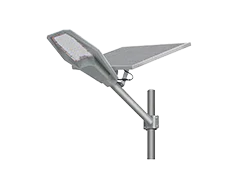Home » LED Street Light » Solar Street Light
Category: Solar Street Light
Categories
- Solar Street Lights
- LED Flood Lights
- LED Roadway Lights
- Decorative Street Lights
Solar Street Light FAQ
Select between monocrystalline and polycrystalline solar panels based on price and conversion rates. Monocrystalline panels have a higher conversion rate (16-17%) but are more expensive. Consider the number of nickel wires in the solar panel, as more wires result in faster conversion speeds.
Choose a suitable battery type based on specific needs. Lead-acid batteries are low-cost but heavy with a short lifespan. Gel batteries offer extended lifespan but at a slightly higher price. Lithium batteries are small, quick to charge, and recyclable but may lack stability. Lithium iron phosphate batteries, though expensive, boast a long service life of up to 10 years and a wide operating temperature range.
While PWM controllers are common, consider the newer MPPT controllers for higher charging efficiency. PWM controllers use digital output but are influenced by weather conditions. MPPT controllers, with Maximum Power Point Tracking, achieve the highest charging efficiency, reaching a tracking efficiency of 99%. However, they come at a higher price compared to PWM controllers.
In rural areas, there are fewer people and cars, so the standard of the street lights is not as high as in the city. The street lights are usually 6-8 meters high, and the light they provide is enough for people’s daily needs.
The power of street lights in rural areas can be as low as 30 watts. In this way, it will need as little energy as possible to light up the rural areas and reduce costs.
Traditional HPS lights have 2-3 times higher electricity costs than LED lights. Solar lights have zero electricity costs.
- Note cable polarity and check insulation.
- Connect power cables securely, insulate, and tie to the light pole.
- Verify normal output on the controller’s indicator and LED display.
- Secure cables, install, and lock the cabin door.
- Perform weekly maintenance, especially after strong wind or rain.
- Check panels, controllers, and batteries for water ingress.
- Conduct overall cleaning and maintenance after a designated period of use.





